Grenada Flag Meaning
A red border surrounding yellow and green triangular sections with seven gold stars and a nutmeg symbol, representing the warmth of the people, sunshine and agriculture, vegetation and youth, and Grenada's fame as the 'Spice Island.'
- Continent
- North America
- Adopted
- 1974
- Ratio
- 3:5
- Colors
- red, yellow, green
- Designer
- Anthony C. George
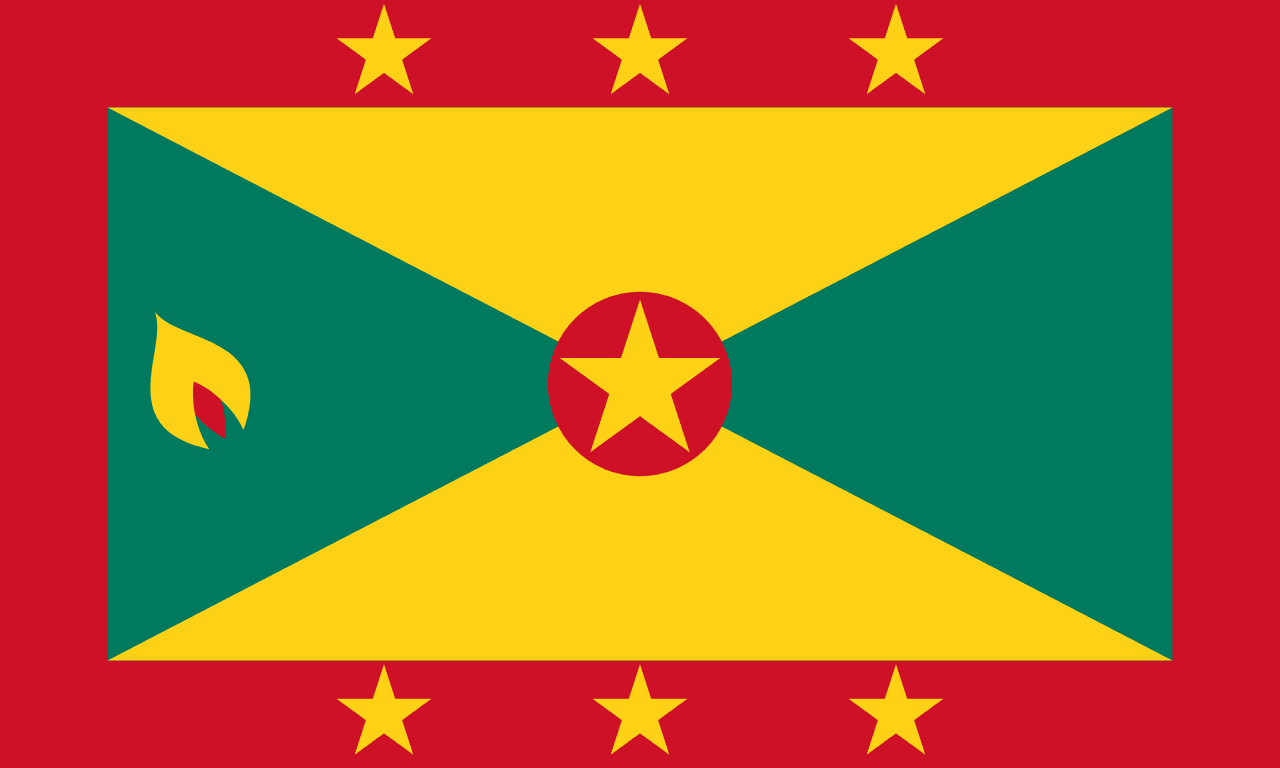
Symbolism
Red Border: Represents the warmth, friendliness, and vitality of the Grenadian people, symbolizing the courage and determination of the nation and the energy that drives the island's development and progress.
Yellow Triangular Sections: Represent the sunshine that bathes the island year-round and the wisdom of the Grenadian people, symbolizing the golden beaches, tropical climate, and the bright future of the nation.
Green Triangular Sections: Represent the lush vegetation and agriculture that covers the island, symbolizing the fertility of the land, the youth of the nation, and Grenada's commitment to environmental preservation and sustainable development.
Seven Gold Stars: Represent the seven parishes of Grenada (Saint George, Saint John, Saint Mark, Saint Patrick, Saint Andrew, Saint David, and Carriacou and Petite Martinique), symbolizing unity among all regions of the nation.
Nutmeg Symbol: Represents Grenada's status as the 'Spice Island' and one of the world's largest nutmeg producers, symbolizing the agricultural heritage and economic foundation that has sustained the island for generations.
History
- Pre-1498: The island was inhabited by the indigenous Kalinago (Carib) people, who called it Camahogne, with a sophisticated culture adapted to the Caribbean environment and inter-island trade networks.
- 1498-1650: Christopher Columbus sighted the island in 1498, naming it Concepción, but Spanish colonization was limited due to fierce Kalinago resistance, with the island remaining largely under indigenous control.
- 1650-1762: French colonization began with the establishment of settlements and sugar plantations, bringing enslaved Africans to work the land, with French flags representing colonial authority and the plantation economy.
- 1762-1974: British conquest established Grenada as a crown colony, with the Union Jack representing over two centuries of British rule, during which sugar, cocoa, and spices became major exports.
- 1967-1974: Grenada gained internal self-government as an Associated State, beginning the transition to independence while developing national symbols and preparing for full sovereignty.
- February 7, 1974: Grenada gained full independence from Britain under Prime Minister Eric Gairy, adopting the current flag design created by Anthony C. George to represent the new sovereign nation.
- 1979-1983: The People's Revolutionary Government led by Maurice Bishop came to power through a bloodless coup, maintaining the flag while implementing socialist policies and aligning with Cuba and the Soviet Union.
- October 25, 1983: The United States invaded Grenada in Operation Urgent Fury following Bishop's assassination and political chaos, restoring democratic government while maintaining the national flag.
- 1983-Present: Democratic governance was restored, with the flag representing Grenada's recovery and development as a stable Caribbean democracy focused on tourism, agriculture, and regional integration.
Trivia
- Grenada is known as the 'Spice Island' because it produces about one-third of the world's nutmeg, making it the second-largest producer after Indonesia.
- The flag represents the smallest independent country in the Western Hemisphere by population, with only about 112,000 residents.
- Grand Anse Beach is consistently rated as one of the world's most beautiful beaches, with two miles of white sand and crystal-clear Caribbean waters.
- Grenada is the southernmost of the Windward Islands and consists of the main island plus two smaller islands, Carriacou and Petite Martinique.
- The flag flies over a country that produces high-quality cocoa, with Grenadian chocolate being prized by chocolatiers worldwide for its unique flavor profile.
- Grenada's underwater sculpture park is the world's first underwater sculpture gallery, combining art with marine conservation in the clear Caribbean waters.
- The flag represents a country where cricket is the national sport, and Grenada has produced several world-class cricketers who have played for the West Indies team.
- St. George's, the capital, is considered one of the most beautiful harbor cities in the Caribbean, with its horseshoe-shaped harbor and colorful colonial buildings.
- Grenada experiences a tropical climate with a dry season and wet season, but is located south of the main hurricane belt, making it relatively safe from major storms.
- The flag flies over a country that is a major producer of cinnamon, cloves, ginger, and other spices, with spice tours being a popular tourist attraction.
- Grenada's Carnival, called 'Spice Mas,' is one of the Caribbean's most vibrant celebrations, featuring elaborate costumes, calypso music, and traditional dances.
- The island has seven natural harbors and numerous bays, making it a popular destination for sailing and yachting in the Caribbean.
- Grenada is home to the St. George's University School of Medicine, which attracts students from around the world and has become a significant part of the economy.
- The flag represents a country with a rich tradition of storytelling, folklore, and cultural practices that blend African, French, British, and indigenous influences.
- Grenada's rainforest contains several endemic species and is part of conservation efforts to protect Caribbean biodiversity and unique island ecosystems.
Related Countries
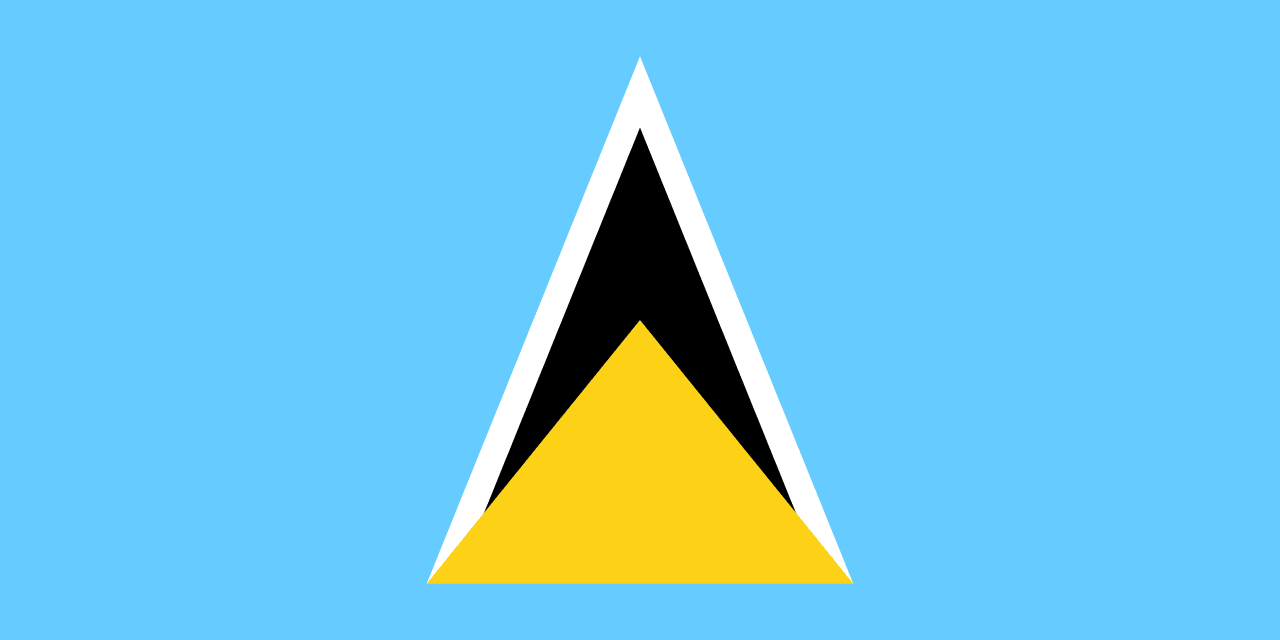
Saint Lucia
North America
A cerulean blue field with a gold isosceles triangle in front of a white-edged black triangle. The design reflects the island’s natural features and cultural heritage.
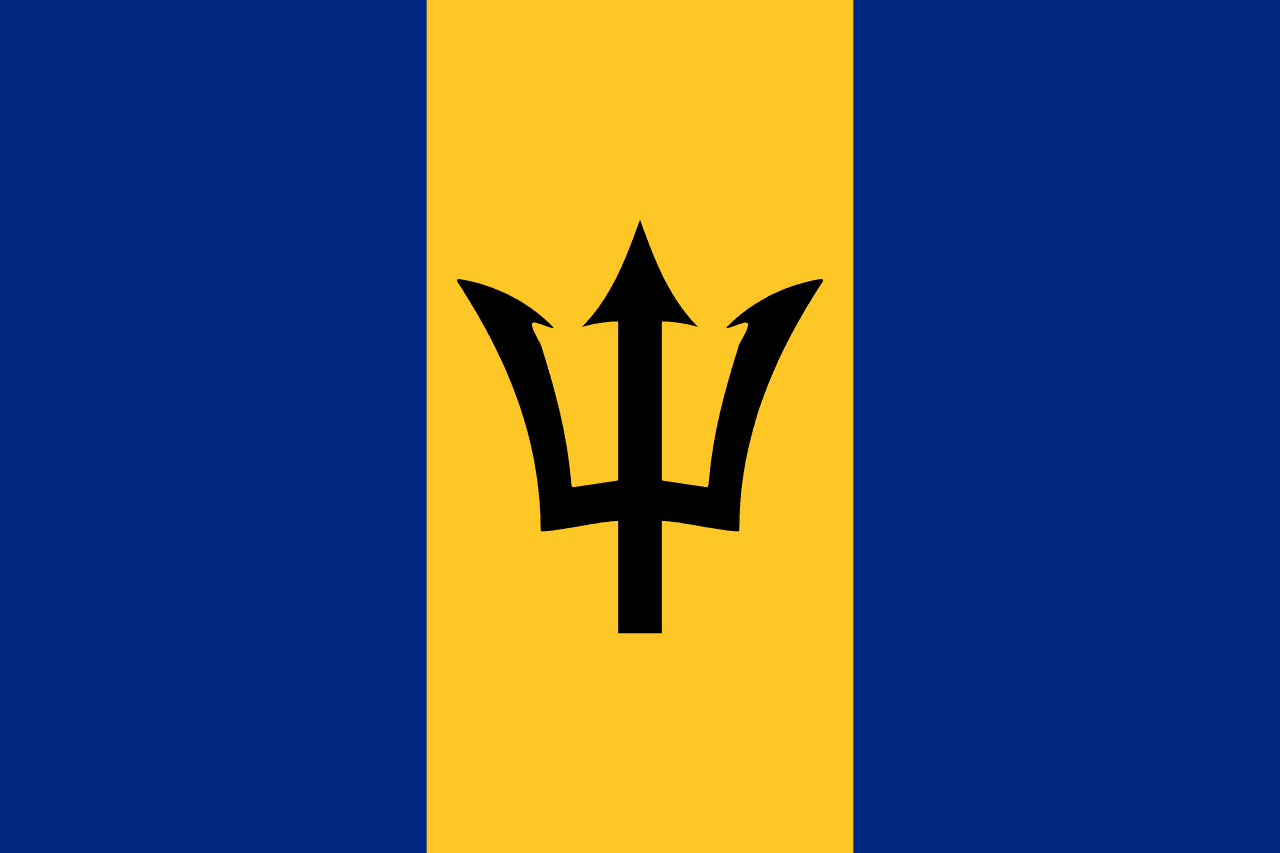
Barbados
North America
Three vertical stripes of ultramarine blue, gold, and ultramarine blue with a black trident head (broken from its staff) in the center golden stripe, representing the sea surrounding the island, the golden sands of its beaches, and the break from colonial dependence on Neptune's trident symbol.
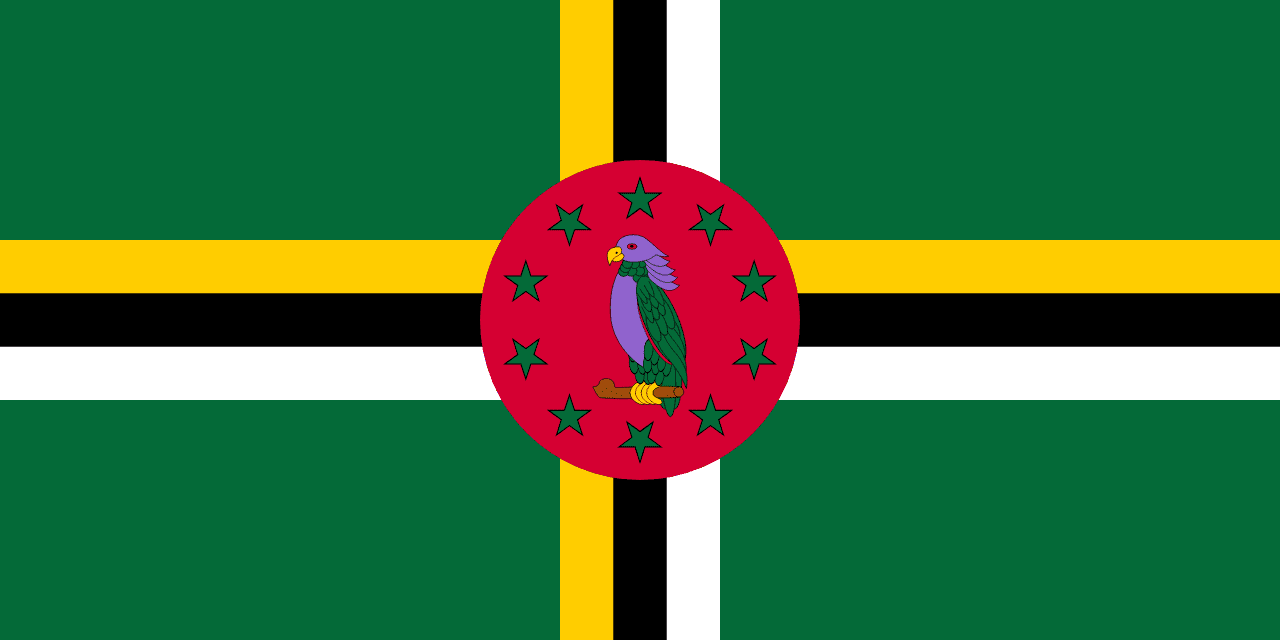
Dominica
North America
A green field with a cross pattern of yellow, black, and white stripes and a red circle in the center containing the Sisserou parrot, representing the lush vegetation, the Trinity, racial harmony, and the unique wildlife of the 'Nature Island of the Caribbean.'
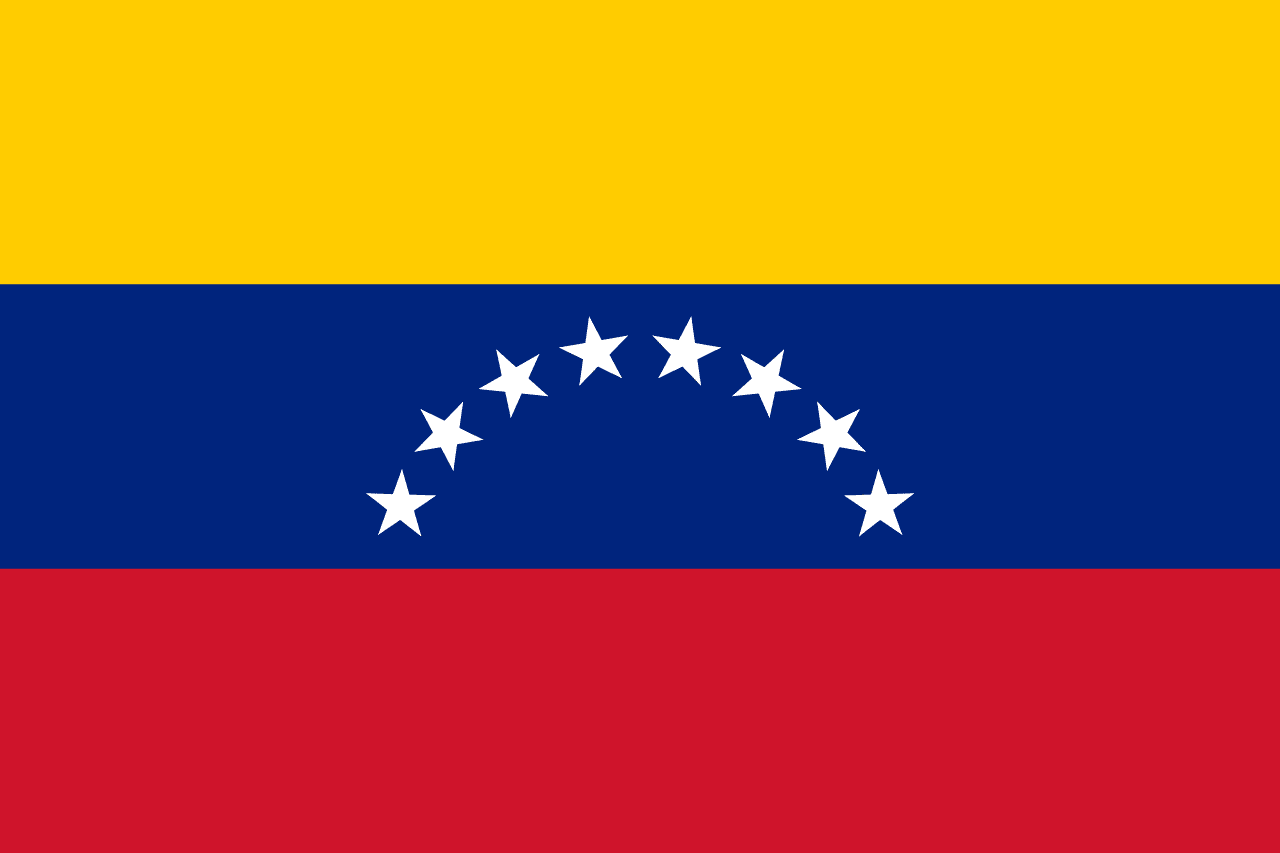
Venezuela
South America
Three horizontal stripes of yellow, blue, and red with eight white stars in an arc on the blue stripe and the coat of arms on the upper hoist corner, representing the wealth of the land, the seas separating Venezuela from Spain, the blood shed for independence, and the eight original provinces that declared independence.

Guyana
South America
A green field with a yellow arrowhead bordered in white pointing toward the fly, and a red triangle bordered in black at the hoist, known as 'The Golden Arrowhead,' representing the country's natural resources, diversity, and forward progress.
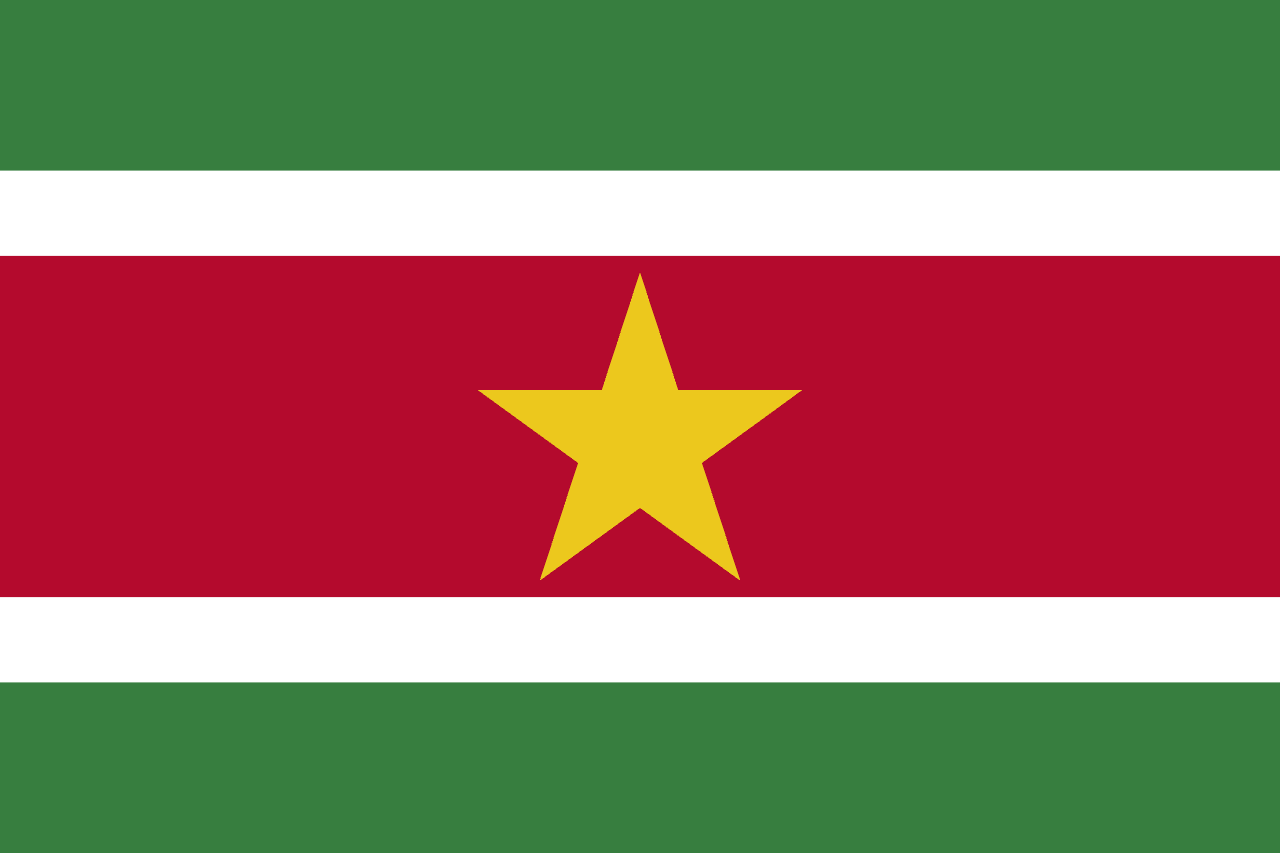
Suriname
South America
Five horizontal stripes of green, white, red, white, and green with a yellow five-pointed star in the center of the red stripe, representing the country's forests and agriculture, peace and justice, unity and progress of the people, hope and golden future, designed for independence in 1975.